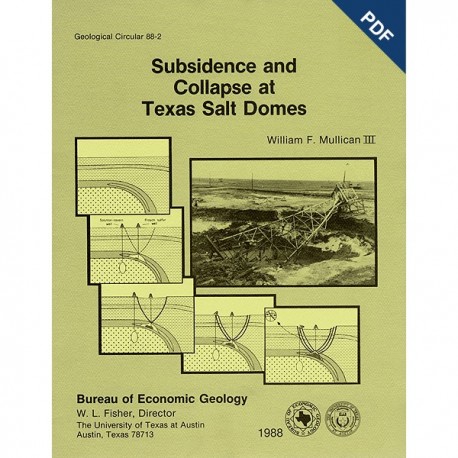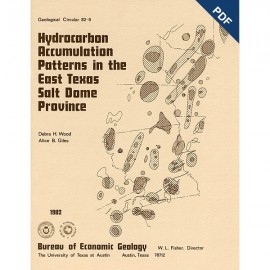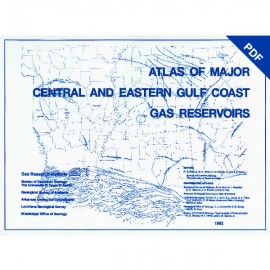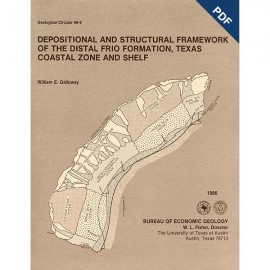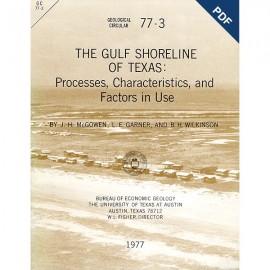Geological Circulars
-
Books & Reports
- Reports of Investigations
- Guidebooks
- Udden Series
- Geological Circulars
- Down To Earth
- Atlases of Major Oil and Gas Reservoirs
- Texas Memorial Museum Publications
- Environmental Geologic Atlas of the Texas Coastal Zone
- Mineral Resource Circulars
- Other Reports
- Seminars and Workshops
- Handbooks
- Submerged Lands of Texas
- Symposia
- Annual Reports
- Open File Reports
-
Maps & Cross Sections
- Thematic Maps
- Miscellaneous Maps, Charts & Sections
- Geologic Atlas of Texas
- STATEMAP Project Maps
- Geologic Quadrangle Maps
- Cross Sections
- Highway Geology Map
- Energy and Mineral Resource Maps
- Shoreline Change and Other Posters
- Wilcox Group, East Texas, Geological / Hydrological Folios
- Bouguer Gravity Atlas of Texas
- River Basin Regional Studies
- Featured Maps
- Posters
- Teachers & the Public
-
Geological Society Publications
- Gulf Coast Association of Geological Societies
- Alabama Geological Society
- Austin Geological Society
- Corpus Christi Geological Society
- Houston Geological Society
- Lafayette Geological Society
- Mississippi Geological Society
- New Orleans Geological Society
- South Texas Geological Society
- GCS SEPM Publications
- Historic BEG & UT Series
GC8802D. Subsidence and Collapse at Texas Salt Domes, by W. F. Mullican III. 36 p., 25 figs., 3 tables, 2 appendices, 1988. ISSN: 2475-3637. doi.org/10.23867/gc8802D. Downloadable PDF.
To purchase this publication in book format, please order GC8802.
ABSTRACT
Subsidence at salt domes results from man-induced and natural removal of salt, cap rock, minerals within the cap rock, and supradomal fluids. In the Houston diaper province, Frasch sulfur mining as caused subsidence bowls and collapse sinkholes at 12 of the 14 sulfur productive domes. Vertical subsidence owing to sulfur mining exceeds 35 ft (11 m) at Boling and Orchard Domes. Aerial photography from 1941 to 1979 documents continuous enlargement of one subsidence feature at Orchard Dome at the lateral rate of approximately 3 acres/year (12,000 m2).
Subsidence mechanisms at salt domes vary between two end members-trough subsrdence and collapse. Trough subsidence is characterized by ductile deformation (gentle downwarping) centered over the zone of extraction and is expressed at the surface as a broad subsidence bowl. This process occurs when sulfur is evenly disseminated throughout relatively flat-lying cap-rock matrix. Collapse occurs when roof slabbing falls into a subsurface void that results from processes such as the extraction of thick-bedded, relatively pure sulfur. It is a form of brittle failure, and collapse sinkholes form when the zone of broken rock migrates to the surface. Typically, both subsidence bowls and collapse sinkholes develop at Frasch sulfur mines; the dominant landform depends on the structural and stratigraphic position of sulfur in the cap rock. Subsidence bowls predominate at Moss Bluff, Fannett, and Spindletop Domes, whereas collapse sinkholes are the typical form at Orchard Dome. The surface of Boling Dome, a site of extensive sulfur production, exhibits excellent examples of both types.
Keywords: Boling Dome, collapse, geologic hazards, Houston diapir province, oil and gas production, Orchard Dome, sinkholes, subsidence, sulfur production, Texas, salt domes
Citation
Mullican, W. F. III, 1988, Subsidence and Collapse at Texas Salt Domes: The University of Texas at Austin, Bureau of Economic Geology, Geological Circular 88-2, 36 p. doi.org/10.23867/gc8802D.
